a bronze plaque at the Central cemetery Friedrichsfelde to the stately, from the cubic block blocks existing monument to the Revolution of Mies van der Rohe. Once, it recalled the murder of Karl Liebknecht, Rosa Luxemburg and their comrades-in-arms on 15. January 1919. A date, which was dedicated yesterday, on Sunday, as every year the traditional memorial March of the red carnations reinforced socialists.
in 1935, were the national socialists, the monument had to be removed and a paved with the tombs of the Communist hero at the Central cemetery Friedrichsfelde. From the beginning, the memorial was contested politically. 100 000 people, adopted in January 1919, of the 32 murdered in the revolution victims, including Karl Liebknecht, and an empty coffin for the missing Rosa Luxemburg.
Sharp, the Berlin magistrate and of the Council of people's controlled by the officer under Friedrich Ebert, the activities of the KPD, which had to be with the remote resting place at the North end of a Kilometer-long landscape of the cemetery is satisfied.
"a Magnificent monument for a banker"
Luxembourg's belated funeral, on 13. In June 1919, the party supporters led to two commemorative events in the year. Since the policy of mourning, demonstrations prevented the remote tomb, gathered the numerous sympathizers from all over Germany in the Berlin center. Representative put small Party legations wreaths in Friedrichsfelde. The fifth funeral in June 1924, the party's journal "Red Flag reports" to the public of the laying of the Foundation stone, in which the Survivors of the January uprising, Wilhelm Pieck, the memory architecture, "presented for the fulfilment of revolutionary duties to the Fallen and the Future" announces that the draft of the KPD memorial Committee until a year later. A wall was supposed to symbolize "how many of our Comrades from the Bourgeoisie to the murder of the wall have been made," says Pieck.
As a Supplement to bronze plates were used, fire pool, and a sculpture by the French sculptor Auguste Rodin from 1883, which in their screaming ugliness of a painful counterpart to the gold else. The plastic was a member of the cultural studies scholar Eduard Fuchs. The patron of the arts lived in by Ludwig Mies van der Rohe-designed private house in Zehlendorf. According to the legend, Fuchs, Mies showed the idea that the architect commented on as a "splendid monument for a banker," laughing, and even received the order.
Mies held the conventional brick-Abiding
The monument to the Revolution of Mies van der Rohe was at 13. June 1926 revealed the time of his architectural turning point: "It was a year of great Awareness, or conscious recognition." The time was ripe for its modern Architecture, which he held so far, only theoretically, in drawings and writings. To date, the real orders were in line with the traditional style.
Despite all the radical changes, such as the use of industrial building materials, gave Mies the conventional brick the Faithful: "As mind is full of the small, handy, for any purpose usable Format. What is the logic shows the Association structure. What is the liveliness of his joints game. What wealth has the simplest wall surface.“ Rational he solved the tasks of construction, with the baking stone blocks as the smallest architectural unit.
Timeless, clear and rhythmically
structured design of a country house made of brick of 1923/24, the house of the Wolf announced in Guben and the monument to the Revolution as its first cubic structures. His design drawing sees the inscription "I was I am I will be. The dead heroes of the Revolution“ for the monument in front, six meters high, twelve meters wide and four meters in depth and execution of the wall behind the heroes graves memorial to the past.
The individual bricks dissolve in zoomed-in to each other arranged in the clinker, which has been offset modules to the right complemented by a Flagpole as well as a steely Soviet star with the Hammer and sickle from the sculptor Herbert Garbe. On a steel frame, the clinker modules add constructed to an asymmetric wall formation.
More aboutSanja Iveković in the DAAD gallery, A Monument to the Revolution
Simone ReberTimeless and clear, the rhythm refers to table-structured sculpture in the expressionist brick on the intellectual characteristics of solidary community, proposed by Rosa Luxemburg and Karl Liebknecht. It should be the only one ever designed by Mies van der Rohe built the monument.

 Hamas-Israel war: US begins construction of pier in Gaza
Hamas-Israel war: US begins construction of pier in Gaza Israel prepares to attack Rafah
Israel prepares to attack Rafah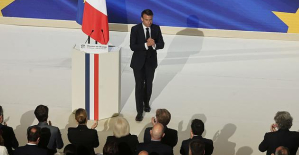 Indifference in European capitals, after Emmanuel Macron's speech at the Sorbonne
Indifference in European capitals, after Emmanuel Macron's speech at the Sorbonne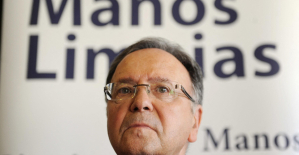 Spain: what is Manos Limpias, the pseudo-union which denounced the wife of Pedro Sánchez?
Spain: what is Manos Limpias, the pseudo-union which denounced the wife of Pedro Sánchez? Spain is the country in the European Union with the most overqualified workers for their jobs
Spain is the country in the European Union with the most overqualified workers for their jobs Parvovirus alert, the “fifth disease” of children which has already caused the death of five babies in 2024
Parvovirus alert, the “fifth disease” of children which has already caused the death of five babies in 2024 Colorectal cancer: what to watch out for in those under 50
Colorectal cancer: what to watch out for in those under 50 H5N1 virus: traces detected in pasteurized milk in the United States
H5N1 virus: traces detected in pasteurized milk in the United States Private clinics announce a strike with “total suspension” of their activities, including emergencies, from June 3 to 5
Private clinics announce a strike with “total suspension” of their activities, including emergencies, from June 3 to 5 The Lagardère group wants to accentuate “synergies” with Vivendi, its new owner
The Lagardère group wants to accentuate “synergies” with Vivendi, its new owner The iconic tennis video game “Top Spin” returns after 13 years of absence
The iconic tennis video game “Top Spin” returns after 13 years of absence Three Stellantis automobile factories shut down due to supplier strike
Three Stellantis automobile factories shut down due to supplier strike A pre-Roman necropolis discovered in Italy during archaeological excavations
A pre-Roman necropolis discovered in Italy during archaeological excavations Searches in Guadeloupe for an investigation into the memorial dedicated to the history of slavery
Searches in Guadeloupe for an investigation into the memorial dedicated to the history of slavery Aya Nakamura in Olympic form a few hours before the Flames ceremony
Aya Nakamura in Olympic form a few hours before the Flames ceremony Psychiatrist Raphaël Gaillard elected to the French Academy
Psychiatrist Raphaël Gaillard elected to the French Academy Skoda Kodiaq 2024: a 'beast' plug-in hybrid SUV
Skoda Kodiaq 2024: a 'beast' plug-in hybrid SUV Tesla launches a new Model Y with 600 km of autonomy at a "more accessible price"
Tesla launches a new Model Y with 600 km of autonomy at a "more accessible price" The 10 best-selling cars in March 2024 in Spain: sales fall due to Easter
The 10 best-selling cars in March 2024 in Spain: sales fall due to Easter A private jet company buys more than 100 flying cars
A private jet company buys more than 100 flying cars This is how housing prices have changed in Spain in the last decade
This is how housing prices have changed in Spain in the last decade The home mortgage firm drops 10% in January and interest soars to 3.46%
The home mortgage firm drops 10% in January and interest soars to 3.46% The jewel of the Rocío de Nagüeles urbanization: a dream villa in Marbella
The jewel of the Rocío de Nagüeles urbanization: a dream villa in Marbella Rental prices grow by 7.3% in February: where does it go up and where does it go down?
Rental prices grow by 7.3% in February: where does it go up and where does it go down? Even on a mission for NATO, the Charles-de-Gaulle remains under French control, Lecornu responds to Mélenchon
Even on a mission for NATO, the Charles-de-Gaulle remains under French control, Lecornu responds to Mélenchon “Deadly Europe”, “economic decline”, immigration… What to remember from Emmanuel Macron’s speech at the Sorbonne
“Deadly Europe”, “economic decline”, immigration… What to remember from Emmanuel Macron’s speech at the Sorbonne Sale of Biogaran: The Republicans write to Emmanuel Macron
Sale of Biogaran: The Republicans write to Emmanuel Macron Europeans: “All those who claim that we don’t need Europe are liars”, criticizes Bayrou
Europeans: “All those who claim that we don’t need Europe are liars”, criticizes Bayrou These French cities that will boycott the World Cup in Qatar
These French cities that will boycott the World Cup in Qatar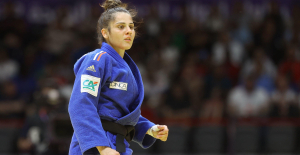 Judo: Blandine Pont European vice-champion
Judo: Blandine Pont European vice-champion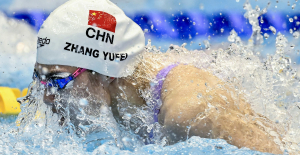 Swimming: World Anti-Doping Agency appoints independent prosecutor in Chinese doping case
Swimming: World Anti-Doping Agency appoints independent prosecutor in Chinese doping case Water polo: everything you need to know about this sport
Water polo: everything you need to know about this sport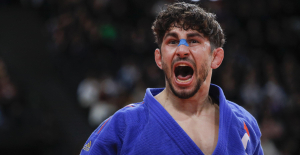 Judo: Cédric Revol on the 3rd step of the European podium
Judo: Cédric Revol on the 3rd step of the European podium


















